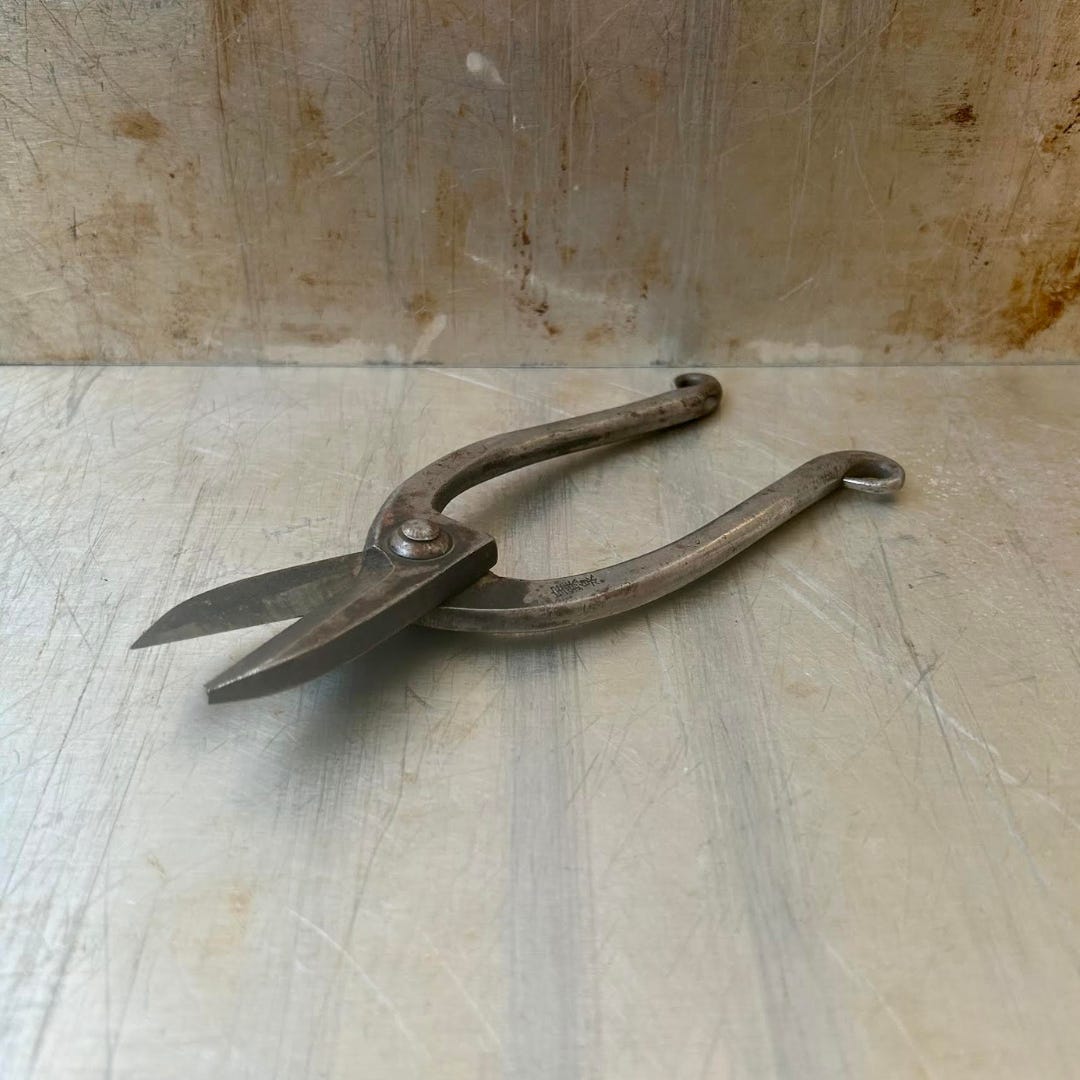THE IKEBANA SHEARS
“Whether ikebana illuminated something already in her, or she applied the practice more deliberately, I see its philosophy reflected in her parenting….”
Mom took ikebana classes when Dad’s service as an Episcopal priest brought our family to Tokyo in the mid 1960s. The Japanese art of floral arranging follows strict guidelines: Each of the main elements in an arrangement is named, and each must be a precise size relative both to the other elements and to the vessel containing them. You absorb the rules, trim your stems and branches, arrange them deliberately in the vase, then step back, make adjustments—and behold the beauty. It must have been a good antidote to the wild daily circus of her life in those days, parenting four children under eight.
I love the aspiration and bold contradictions of ikebana, from its name—literally, giving life to flowers—to its tools, especially the steel shears with elegantly curved arms, which cut cleanest when held loosely.
Whether ikebana illuminated something already in her, or she applied the practice more deliberately, I see its philosophy reflected in her parenting, her clear expectations and light touch. Of course the metaphor collapses pretty quickly—children are more willful than cut flowers—but you could do worse than to set some ground rules and give your offspring space to flourish.
Mom followed ikebana principles after we left Tokyo—using daffodils and forsythia Dad grew—and taught them to me. (To this day, I always cut my stems on the diagonal, under water running like a mountain stream.) Her arrangements now were freer than any she’d made in class, but still had more flair than I could achieve.
She had daffodils in the house when I helped pack for their move to assisted living, the blooms lighting a dark corner as they practically sprang from a pale gray pottery jug. Mom sat in her faded blue wing chair while I held things out for her to consider. Corelle dishes? Thumbs up. Heavy green wine-bottle glasses? Thumbs down. Ikebana shears? Thumbs UP. Never mind that her tremor made the shears tricky to handle and that her gait was so unsteady, she hadn’t been outside on her own in months. She was losing so much with the move, I couldn’t suggest she give up this link to some of her most vibrant days.
After Mom died, I pulled the ikebana shears from the little kitchenette drawer, wiped off the dust and started to rubber band the handles together for donation. But as I held them loosely in my hand, letting the blades softly click, I could hear the sound of them cutting a flowering branch as surely as I could hear my mother’s voice.
Now they live in my knife drawer, their arms jostling together, hello!, every time I pull it open. I use them sometimes to clip a stem, even though I find kitchen shears easier. The handles tend to pinch my palm when I don’t hold them lightly enough, but that’s living with grief, isn’t it? Holding pain with joy.
—Caroline M. Grant
Caroline Grant, co-director of the Sustainable Arts Foundation, has published essays in The New York Times, The Washington Post, Salon and Ozy, and co-edited two anthologies: Mama, PhD: Women Write About Motherhood and Academic Life and The Cassoulet Saved Our Marriage: True Tales of Food, Family, and How We Learn to Eat. She is working on a longer project about her mother’s kitchen tools.





